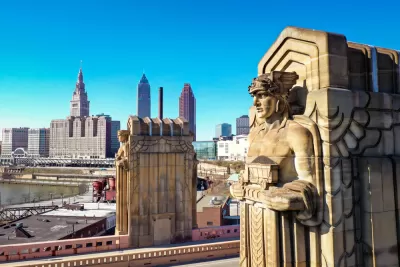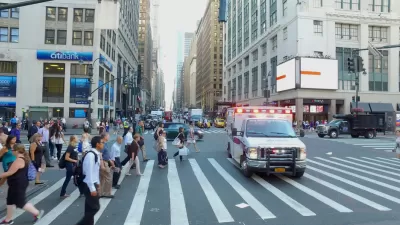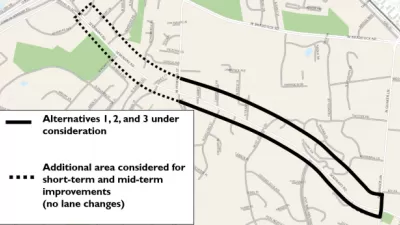Cleveland is working to become the latest U.S. city to set a goal to eliminate traffic fatalities.

Cleveland is putting the finishing touches on a Vision Zero plan following four years of planning, according to an article by Steven Litt for the Plain Dealer. The plan would eliminate traffic fatalities in the city by 2032.
After providing an overview of the international Vision Zero movement, Litt describes the need for traffic safety improvements in Cleveland. “Some 19,000 crashes have occurred on city streets over the past five years,” writes Litt. “The average annual number of deaths from 2016 to 2021 was nearly 55. There were 74 deaths in 2021, and 31 as of August 8 this year” according to Litt’s source in the article, Calley Mersmann, Cleveland’s senior strategist for transit and mobility.
Traffic safety is also much worse in Cleveland’s predominantly Black neighborhoods on the city’s East Side, according to the article.
While traffic fatalities are climbing nationwide, and some cities that have made great fanfare of their adoption of Vision Zero have only seen more traffic fatalities in recent years, there are few notable examples of success, including Fremont, California and Hoboken, New Jersey.
Advocates, such as Angie Schmitt writing for Planetizen in March 2021, say Vision Zero is possible, with the right combination of technological and design changes, notably including speed governors on cars such as the technology required of electric scooters.
The source article, linked below, includes more details about the political and planning partnerships that paved the way for Cleveland’s new Vision Zero initiative. Vision Zero will be considered by the city’s Planning Commission later this week, before heading to the full City Council for final approval.
“The city is also ramping up its Complete and Green Streets program, following City Council approval earlier this year of an updated version of an earlier ordinance carrying the same name,” notes Litt.

Montreal Mall to Become 6,000 Housing Units
Place Versailles will be transformed into a mixed-use complex over the next 25 years.

Planetizen Federal Action Tracker
A weekly monitor of how Trump’s orders and actions are impacting planners and planning in America.

Four Reasons Urban Planners Can’t Ignore AI
It’s no longer a question of whether AI will shape planning, but how. That how is up to us.

Bend, Deschutes County Move to Restrict Major Homeless Encampment
City and county officials are closing off portions of an area known as Juniper Ridge where many unhoused residents find shelter, hoping to direct people to housing and supportive services.

High Housing Costs Driving Down Transit Ridership in LA
When neighborhoods gentrify and displace lower-income residents, transit ridership suffers, new research shows.

Iowa Legalizes Accessory Dwelling Units
A new law will allow property owners to build ADUs on single-family lots starting on July 1.
Urban Design for Planners 1: Software Tools
This six-course series explores essential urban design concepts using open source software and equips planners with the tools they need to participate fully in the urban design process.
Planning for Universal Design
Learn the tools for implementing Universal Design in planning regulations.
City of Mt Shasta
City of Camden Redevelopment Agency
City of Astoria
Transportation Research & Education Center (TREC) at Portland State University
City of Camden Redevelopment Agency
Municipality of Princeton (NJ)
Regional Transportation Commission of Southern Nevada





























